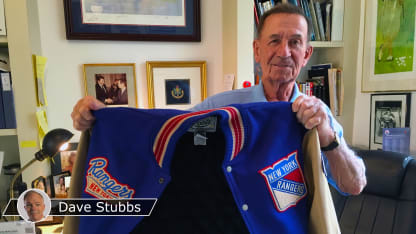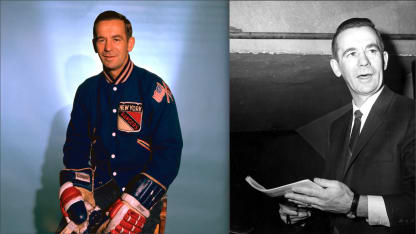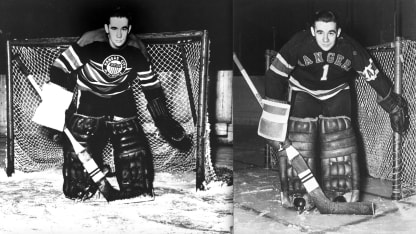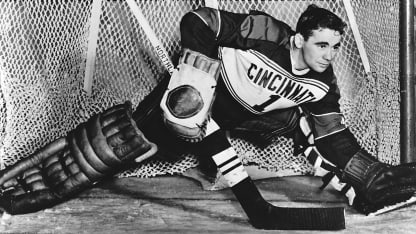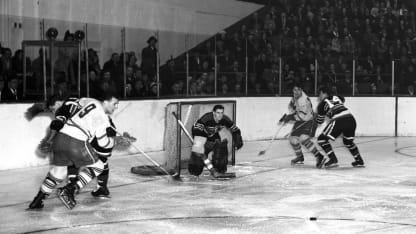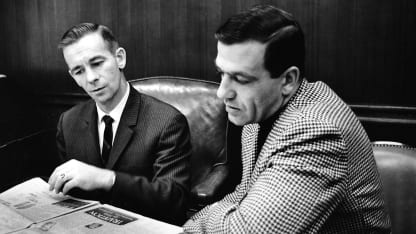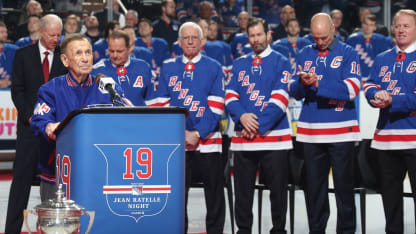He finally chose the Rangers, running their junior operation in Guelph, Ontario, nurturing some of the organization's greatest young talents including Ratelle and the late Rod Gilbert, before being brought to New York as assistant to GM Muzz Patrick, taking the reins himself in the fall of 1964.
As important as hockey was to Francis, his family forever was his bedrock. He met Emma Lungal in Saskatchewan while she was studying to become a nurse; they would be married for 68 years, until her death Sept. 25, 2020.
Francis' devotion to Emma was such that after she took ill in 2008, only three times over 12 years did he spend a night away from home, and even then, reluctantly, once in December 2015 to accept the Wayne Gretzky International Award from the U.S. Hockey Hall of Fame for his contributions to the sport in America, and then for the February and December 2018 Madison Square Garden jersey retirements of Ratelle and Vic Hadfield.
"I would never be able to do the things I did without Emma, believe me," Francis said. "While I worked around the clock to build my teams, she took the station wagon and transported our sons, Rick and Bob, to baseball, football, hockey. ... Our boys both ended up with hockey scholarships because of her. All I knew was where I lived, Madison Square Garden and the airport. But Emma knew New York, and she knew it like the back of her hand."
